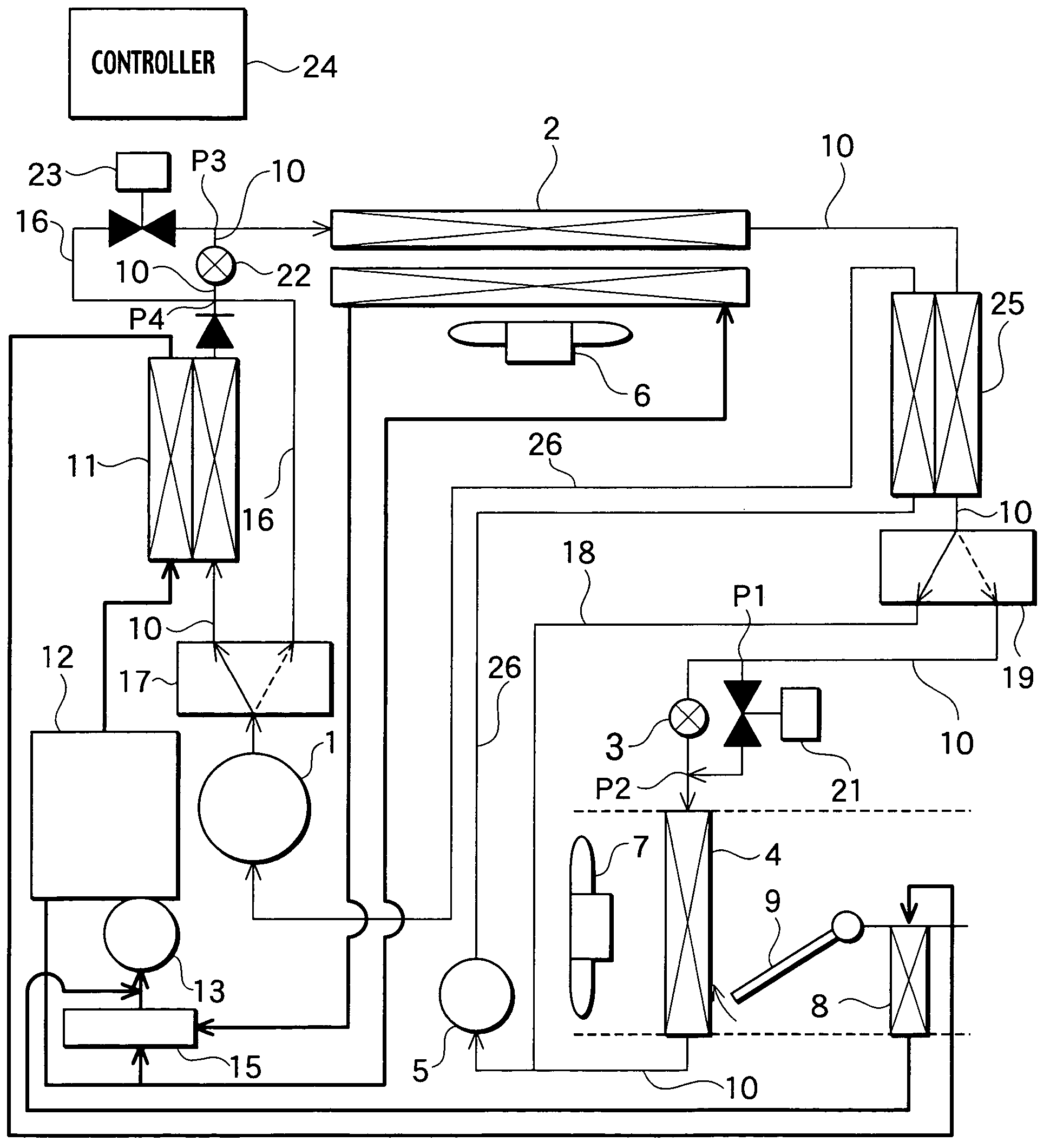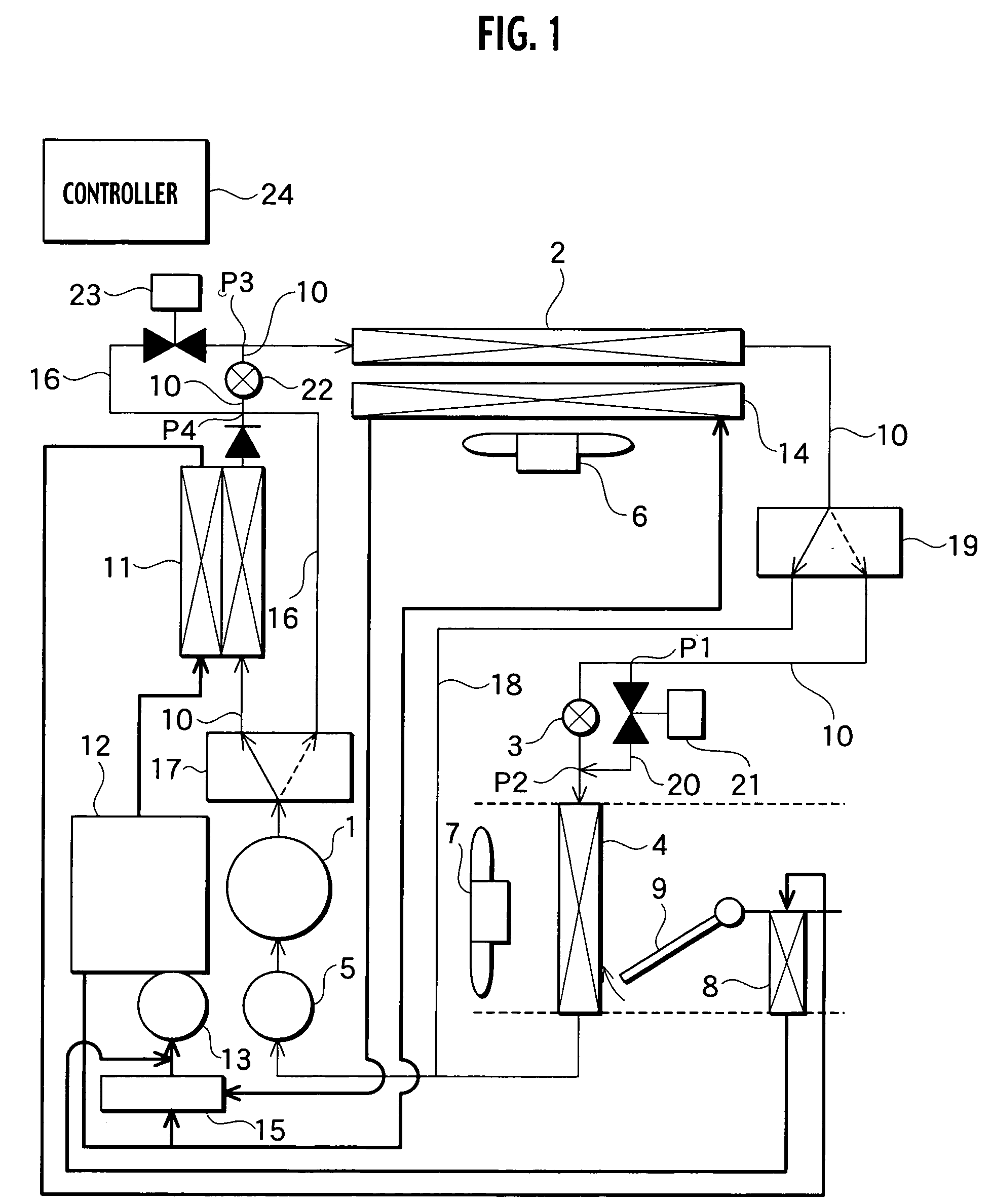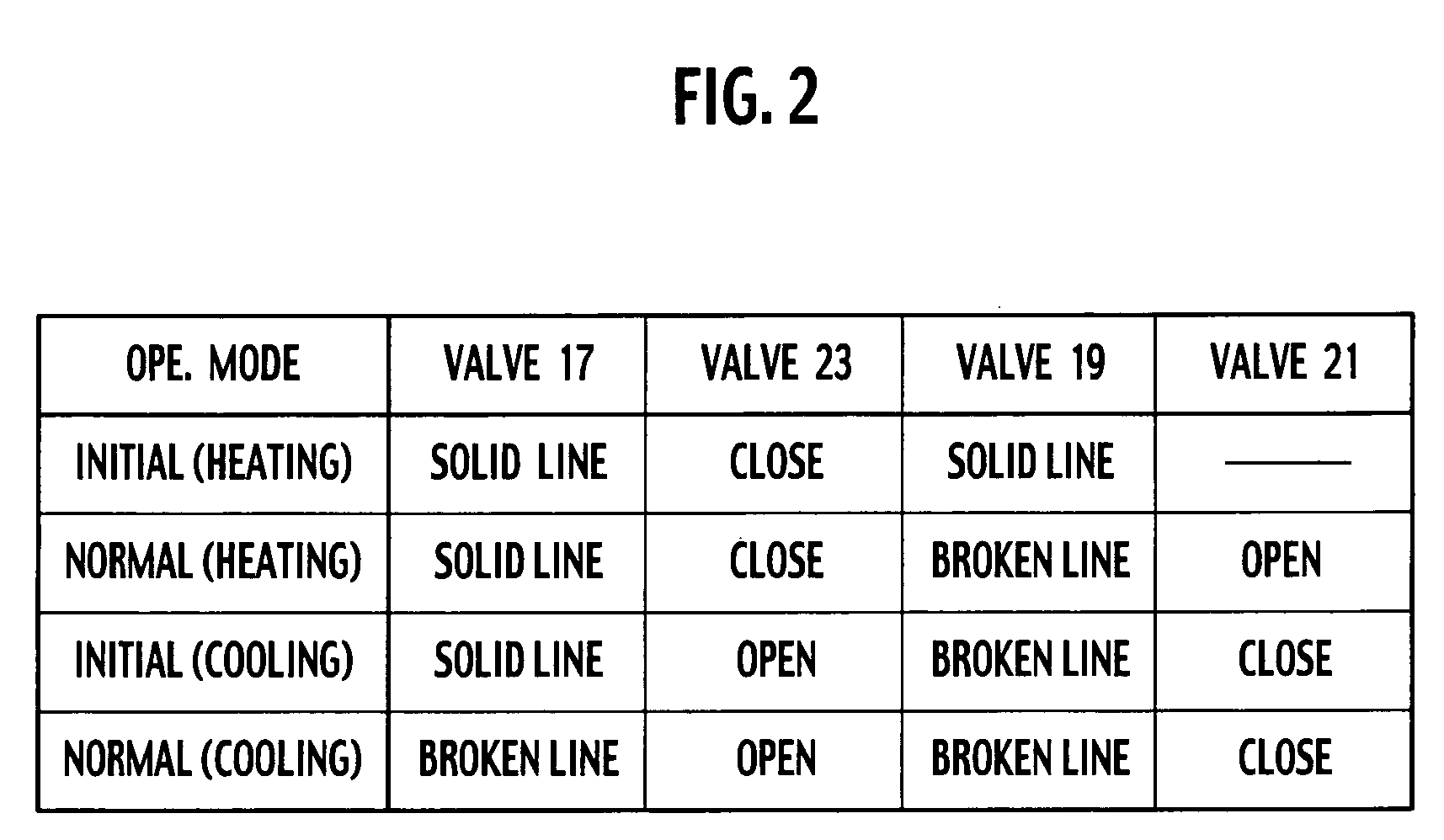Air conditioning apparatus for vehicle
a technology for air conditioning apparatus and vehicle, which is applied in the direction of lighting and heating apparatus, heating types, instruments, etc., can solve the problems of reducing the efficiency of the engine, and affecting the operation of the air conditioner
- Summary
- Abstract
- Description
- Claims
- Application Information
AI Technical Summary
Benefits of technology
Problems solved by technology
Method used
Image
Examples
first embodiment
[0020]Embodiments of the present invention will be described with reference to the accompanying drawings. FIG. 1 is a schematic structural view of an air conditioning apparatus for a vehicle, in accordance with the present invention.
[0021]The air conditioning apparatus includes a compressor 1 for compressing coolant, a gas cooler 2 (as the outdoor-side coolant heat exchanger) that exchanges heat of coolant compressed by the compressor 1 for ambient air, a pressure control valve 3 (as the expansion unit) for adiabatically expanding the coolant after heat exchange at the gas cooler 2, an evaporator 4 (as the indoor-side coolant heat exchanger) that exchanges heat of the coolant expanded at the pressure control valve 3 for air conditioning wind supplied into a vehicle cabin and an accumulator 5 for separating the coolant flowing out of the evaporator 4 into vapor-phase coolant and liquid-phase coolant. Through the intermediary of a coolant piping, these constituents (1, 2, 3, 4 and 5) ...
second embodiment
[0054] the air conditioning apparatus is provided with an internal heat exchanger 25 that performs heat exchange between the coolant discharged from the gas cooler 2 and the coolant flowing into the compressor 1. The internal heat exchanger 25 is arranged in the flow path 10, between the gas cooler 2 and the valve 19. In operation, through a flow path 26, the coolant flowing out of the accumulator 5 flows into the internal heat exchanger 25 in heat exchange for the coolant discharged from the gas cooler 2 and thereafter, the coolant flows into the compressor 1 through a flow path 26.
[0055]Owing to the heat exchange between the coolant on the high-pressure side and the coolant on the low-pressure side, the endothermic amount of the evaporator 4 at cooling is increased to improve the cooling efficiency. Noted that, at heating, both coolants flowing into the internal heat exchanger 25 are coolants on the low-pressure side together and therefore, the heat exchange between the coolants g...
PUM
 Login to View More
Login to View More Abstract
Description
Claims
Application Information
 Login to View More
Login to View More - R&D
- Intellectual Property
- Life Sciences
- Materials
- Tech Scout
- Unparalleled Data Quality
- Higher Quality Content
- 60% Fewer Hallucinations
Browse by: Latest US Patents, China's latest patents, Technical Efficacy Thesaurus, Application Domain, Technology Topic, Popular Technical Reports.
© 2025 PatSnap. All rights reserved.Legal|Privacy policy|Modern Slavery Act Transparency Statement|Sitemap|About US| Contact US: help@patsnap.com



